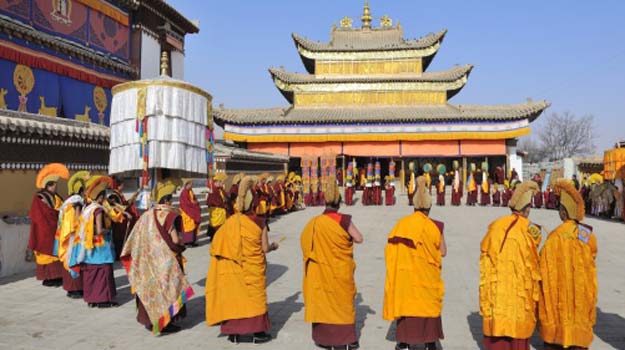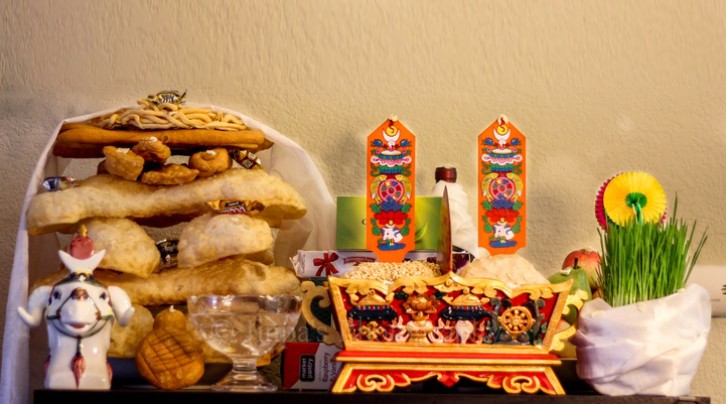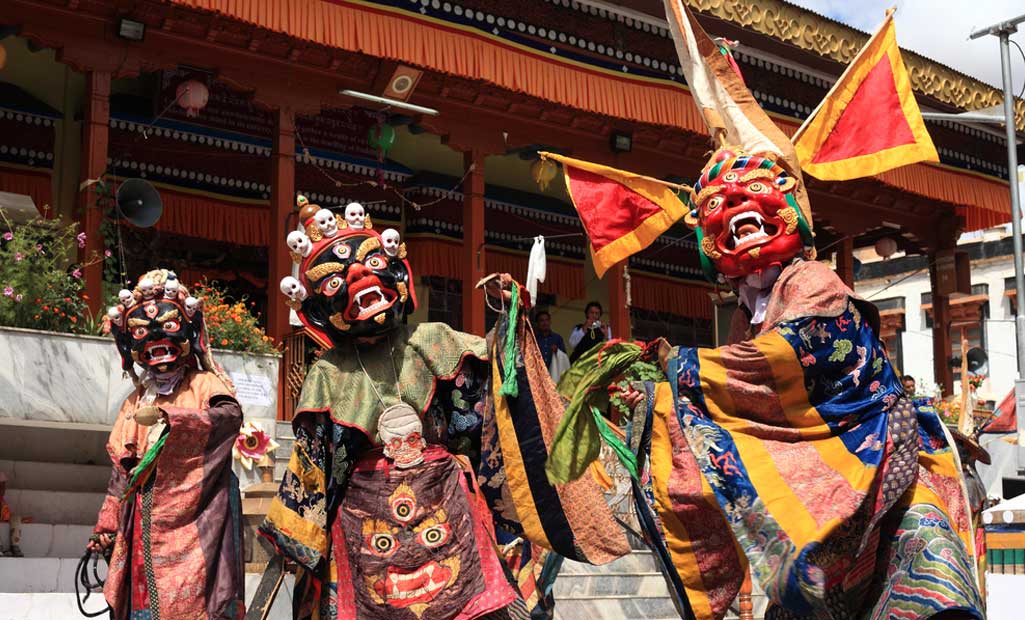Here’s the much-awaited dossier on Sikkim’s New Year festival – Losar
The Tibetan New Year known as Lossar is celebrated with great excitement and fervour in Sikkim. Losar is a harvest festival and like the other harvest festivals of India is a celebration of the bounty of nature. A time to celebrate life and be thankful for nature and the elements for their benevolence.
When is the Losar Festival Celebrated?

The Losar festival is celebrated in the month of February, in 2018 the festival walls on the 16th of February.
Two Days before the festival of Losar, the Gutor Chaam is performed at Rumtek Monastery, the largest monastery in Sikkim, situated very near Gangtok. The Gutor Chaam is a masked Lama dance that depicts the victory of good over evil and is performed by the monks. The dance is also a prayer for world peace and the good of all living beings. It is also an appeal to the divine powers for the protection of the area against natural calamities.
What is the Significance of the Losar Festival?
Losar in Tibetan roughly translates into English as ”New Year”. Losar is a much awaited annual festival which not only marks the beginning of the New Year in Sikkim, but it is also welcomed as a festival of celebration by the farmers who have just finished the harvesting season and look forward to a relaxing break.
What are the Origins of the Losar Festival?
Though the Losar festival now is interlinked with Buddhism, the celebration of the Losar festival in Sikkim, Bhutan, and Nepal existed even prior to the beginning of Buddhism in the region. In the earlier days, the festival used to be celebrated during the winter with large offerings of incense to appease the local deities and ward of evil and negative spirits. However, with the advent of Buddhism the festival transformed into a harvest festival and the most important of the Tibetan Buddhist festivals.
How is Losar celebrated?

Though the festival of Losar is a one-day festival technically, it involves over a week of celebrations. The festive atmosphere engulfs the entire state and individual houses, streets, villages, towns, temples, and monasteries glitter and shines with decorations of vibrant colours. People indulge in their favourite pastime of shopping and buying new clothes and other accessories including jewellery to turn out in their best for the festival. This is also the time for socializing with family and friends and strengthening as well as forging new bonds. The streets come alive with performances of vibrant Yak dances by energetic and bubbly youngsters. This is the time for travellers to get an immersive experience of the culture of Sikkim.
Of course one of the highlights of the festival is the masked Cham dances performed by the Lamas in the monasteries for world peace.
One more very significant and important feature of the Losar festival celebrations in Sikkim is a ritual that is performed across homes in the state. A bucket of what is known as Tsampa which is a mixture of butter and roasted barley flour is offered in altars across homes ritualistically. This is done for invoking the blessings of a good and bountiful harvest in the new year.

The Losar festival is indeed a celebration of the human spirit, a celebration of life and an expression of gratitude. The festival which is deep rooted in ancient culture holds so much significance in contemporary times. In a world where acts of terror and war are rife, festivals like Losar come as a breath of fresh air. It is so heartening to see have monks dancing and praying for world peace and the good of the planet.
Sikkim is an enchanting destination at any time, but if one wants to get drenched in the beauty of its colourful culture, then a visit during the Losar festival is on the cards. If you looking for different experiences on your holiday, then you must head to Sikkim to be a part of the Losar celebrations. Gangtok in Sikkim is one of the hill stations in North India you must visit. There are many good places to visit near Gangtok.
And when you get to Sikkim, Sterling Gangtok awaits to help you holiday differently.

